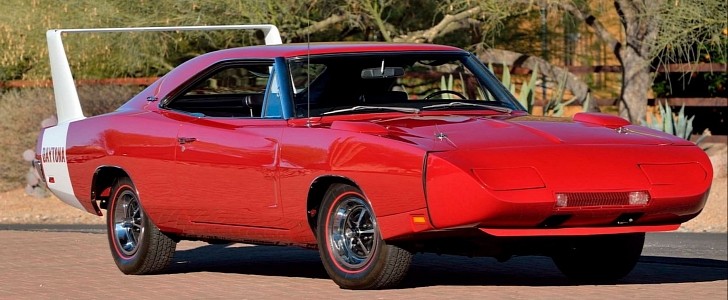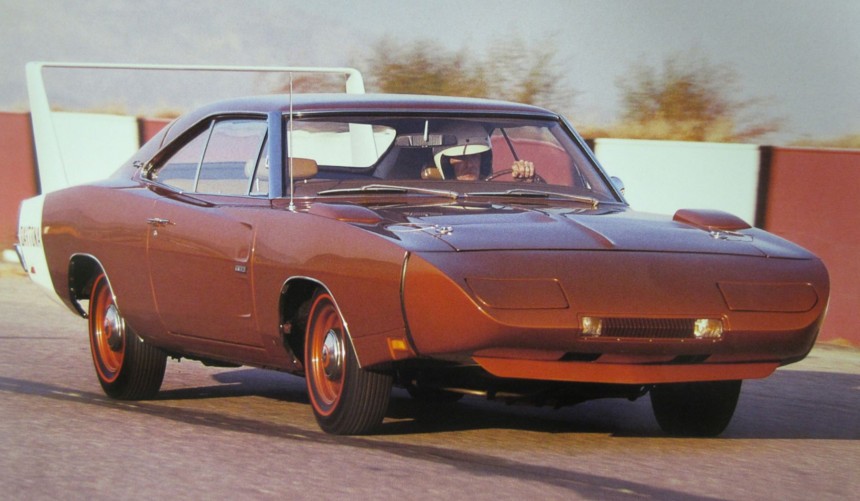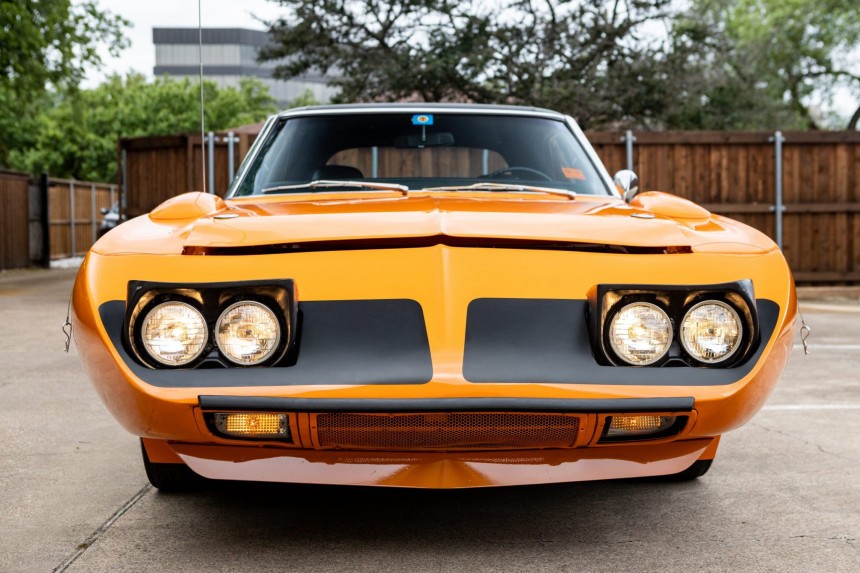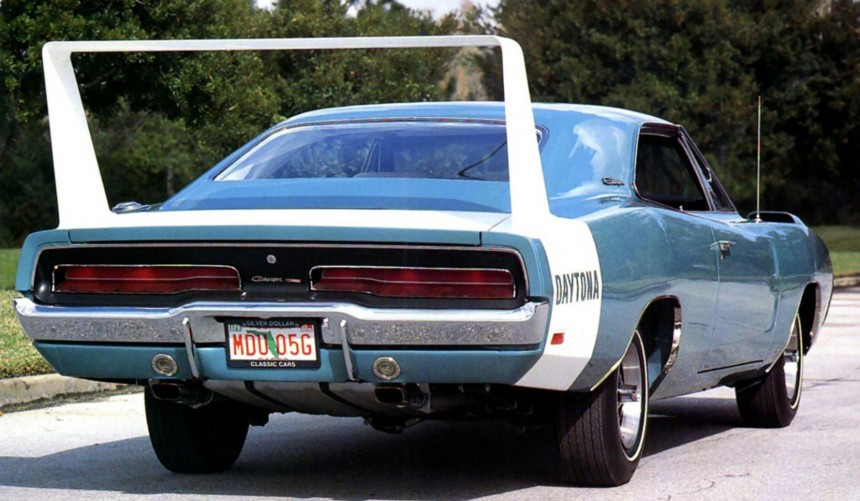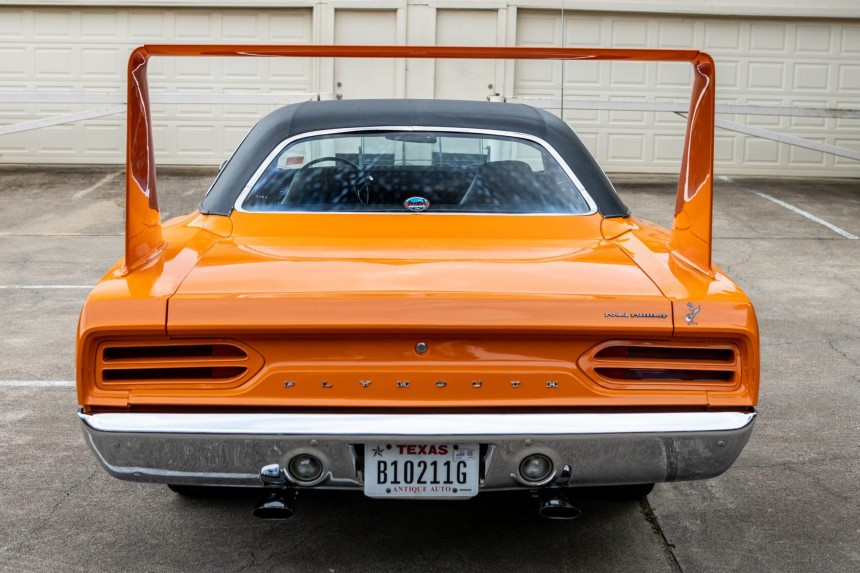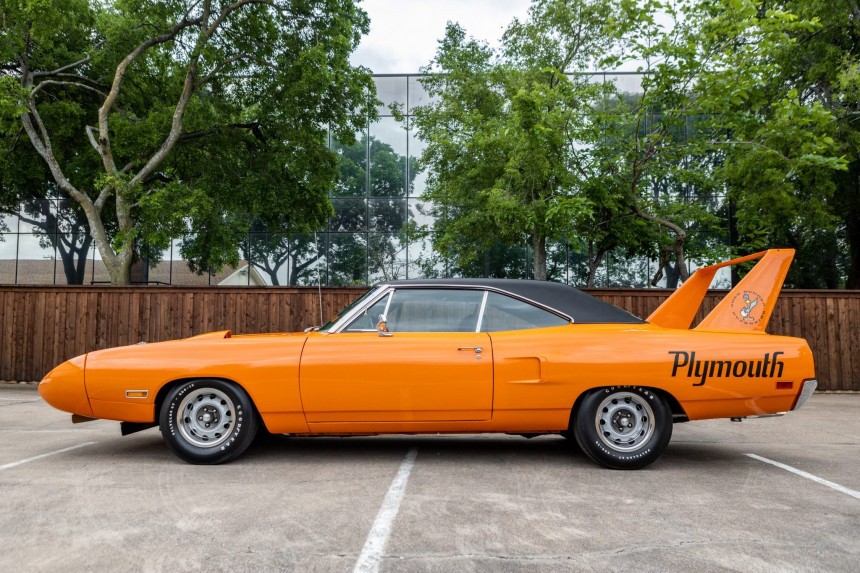They're known as Mopar's winged warriors, and the story goes they were considered so ugly when new that many of them sat on dealer lots for months. Now, they're iconic classics that fetch big money at auctions. I'm talking about the 1969 Dodge Charger Daytona and the 1970 Plymouth Superbird, a pair of homologation specials designed with NASCAR racing in mind.
Produced by two different divisions within the Chrysler Corporation, these winged muscle cars were very similar on the outside and under the hood, but not exactly identical. Here's how you can tell them apart beyond their badges and decals.
On the Daytona, however, they hide louvered holes mounted atop the fenders, so these scoops are functional on Dodge's take on the winged racer.
While the Daytona comes with a thumbwheel on the radio, the Superbird features a more conventional round knob. Likewise, while the Daytona's shifter has a round ball, the Superbird is equipped with the more iconic pistol grip. But both of these features have to do with the model year upgrades that Mopar introduced for 1970 when the Superbird debuted.
The rear windows are also quite different on these cars. The Daytona has a more streamlined, plugged-in window, while the Superbird sports the more conventional design of the Road Runner.
But while the Superbird looked better than the Daytona, its design was less aerodynamically efficient. Specifically, while the Daytona's drag coefficient is 0.29, the Superbirds coefficient is 0.31. This also resulted in the Daytona being up to three mph (4.8 kph) faster than the Superbird on high-speed tracks like Daytona and Talladega.
Nose cone grille
You'll be able to spot which car is which by looking straight at their noses. The Charger Daytona sports a narrow grille right in the center of the nose. The vent itself hides a pair of lights to the corners. The Superbird, on the other hand, features a larger grille under the tip of the nose. And unlike the Daytona's, it's flanked by exposed lights.Hood pins
Both cars are equipped with quick-release hood pins, a feature sourced from race-spec vehicles. While they look identical on both cars, they screw in different places. On the Charger Daytona, the pins screw at the top. On the Superbird, they screw underneath the hood, to one of the cowl elements. It's a tiny detail that many people don't seem to catch at first glance.Fender scoops
Just like the hood pins, the fender scoops look identical on both cars. They are actually different, but you'll have to look into them to notice the changes. On the Superbird, the scoops are completely closed off. Or fake, if you like this term better. These scoops only help with airflow, so they have nothing to do with cooling or, a common misconception, tire clearance.On the Daytona, however, they hide louvered holes mounted atop the fenders, so these scoops are functional on Dodge's take on the winged racer.
A-pillars
The A-pillars are identical on both cars, but they're attached using different techniques. The Charger Daytona sports a crude solution, with the chrome metal trim glued to the black rubber. For the Superbird, Plymouth opted to drill holes through the trim and fix it to the pillars with screws.Interior
The Dodge Charger and the Plymouth Road Runner were very similar back in the day. Since the Daytona and the Superbird were heavily based on these cars, they were almost identical too. Only a couple of details set the two apart: the radio and the shifter.While the Daytona comes with a thumbwheel on the radio, the Superbird features a more conventional round knob. Likewise, while the Daytona's shifter has a round ball, the Superbird is equipped with the more iconic pistol grip. But both of these features have to do with the model year upgrades that Mopar introduced for 1970 when the Superbird debuted.
Fuel cap
The gas cap is one of those differences that you can't miss. On the Daytona, you'll find it atop the left-side rear fender, very close to the wing. It's also a race-style cap, different than the usual production-car element. Plymouth retained the solution from the Road Runner, with the fuel cap hidden behind the rear license plate.Roof and rear window
The roof is perhaps the main feature that will tell you whether the winged Mopar is a Daytona or a Superbird. That's because while the Charger Daytona sports a standard metal top, all Superbirds were fitted with vinyl tops. Plymouth chose this solution so that it wouldn't bother cleaning the welding points. Not only it hides imperfections, but it helps improve aerodynamics.The rear windows are also quite different on these cars. The Daytona has a more streamlined, plugged-in window, while the Superbird sports the more conventional design of the Road Runner.
